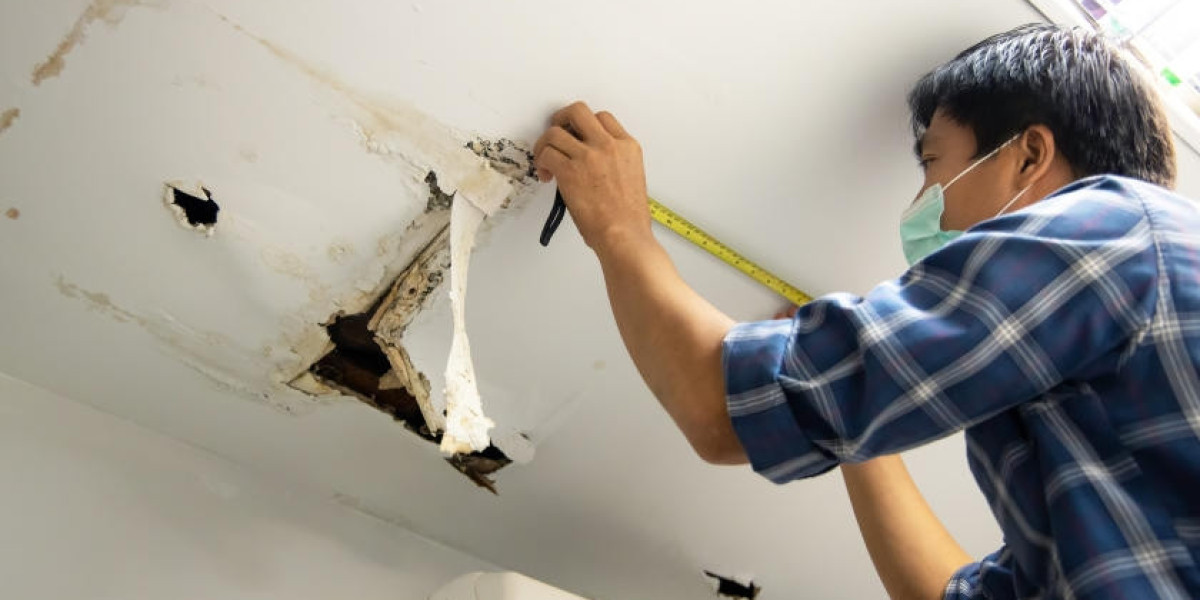Water damage is one of the most frustrating and common problems for homeowners. Whether it's from a leaking roof, burst pipe, or overflowing sink, moisture can quietly seep into your walls and ceilings. The result? Stains, warping, soft spots, and even mold growth. If you've noticed bubbling paint, sagging drywall, or soft wall surfaces, it's time to take action.
Fortunately, water-damaged drywall repair doesn’t have to involve chaos. With the right approach and tools, you can repair damaged areas quickly and efficiently—without the mess, the guesswork, or added stress. This guide walks you through how to repair drywall after a water leak, when to consider patching versus replacing, and what to expect from emergency drywall repair services.
Common Signs of Water-Damaged Drywall
Water damage isn’t always obvious. Sometimes it starts with subtle changes. Being able to identify early signs can help you address the issue before it spreads or leads to mold.
Look for:
- Brown or yellow stains on walls or ceilings
- Soft or sagging drywall, especially in ceilings
- Cracks or bubbling under the paint
- Peeling or flaking paint
- Mildew smell or visible mold spots
- Warping or misshapen surfaces
If you’ve noticed any of these signs, especially near plumbing fixtures or beneath roofing, it’s time to inspect further or call in help.
Causes of Ceiling Drywall Water Damage
Most drywall water damage is related to some kind of leak or moisture buildup. In Las Vegas and surrounding areas, common culprits include:
- Leaky pipes behind walls or ceilings
- HVAC condensation dripping onto drywall
- Roof leaks during heavy rain or storms
- Overflowing sinks, tubs, or toilets
- Appliance malfunctions, like a broken washing machine or dishwasher
Once the water finds its way in, drywall—made primarily from gypsum—acts like a sponge. It absorbs moisture, becomes soft, and loses its shape. The longer the water sits, the worse the damage becomes.
Fixing Soft or Sagging Drywall
A sagging drywall ceiling is more than just an eyesore. It poses real safety risks, as large sections can eventually fall. If you notice any sagging or softness when you press on a wall or ceiling, action is needed right away.
Here’s what to expect during the repair process:
1. Identify the Source of the Leak
Before you fix the drywall, it’s critical to stop the water from coming in. Otherwise, any repair will just become temporary.
2. Dry the Area Thoroughly
Once the leak is repaired, allow the area to dry completely. Professionals often use fans or dehumidifiers to speed up this step.
3. Remove Damaged Drywall
If the drywall is still soft, sagging, or moldy after drying, it needs to be cut out. Typically, the affected area is cut in a square or rectangular shape to make patching easier.
4. Treat for Mold (if necessary)
If mold is found, it must be cleaned and treated before new drywall is installed. Mold growth can cause health issues and weaken new materials.
5. Install New Drywall
Once the area is clean and dry, a fresh piece of drywall is cut to fit and fastened into place. Taping, mudding, sanding, and priming follow to match the surrounding surface.
Drywall Patching and Replacement
Not all water damage requires a full replacement. Smaller areas may only need patching. Here's a quick breakdown of the difference:
When to Patch:
- Stains or small holes (under 6 inches)
- Minor bubbling or peeling paint
- Surface-level moisture damage
When to Replace:
- Large sections of sagging drywall
- Structural warping
- Mold is present in the drywall
- Soft spots that crumble to the touch
Patching is quicker and less expensive but only works if the core structure of the drywall remains intact. If in doubt, it’s best to ask a professional.
How Emergency Drywall Repair Services Help
Water leaks don’t always happen during convenient hours. A burst pipe at 2 AM or roof leak during a holiday storm won’t wait for business hours to cause damage. That’s why emergency drywall repair services exist—to respond when timing is critical.
Benefits of Emergency Services:
- Rapid response to prevent mold and further damage
- Immediate drywall removal if collapse is a risk
- Moisture detection tools to identify hidden problems
- On-the-spot patching or replacement, when possible
Having a go-to provider for these services means you can act quickly, protect your property, and avoid larger bills down the road.
What to Expect from a Professional Drywall Repair Service
When you call in a drywall repair expert, they’ll usually follow a clear and efficient process:
1. Inspection
They assess the extent of water damage, check for structural issues, and identify the moisture source.
2. Drying
Drying tools such as industrial fans and dehumidifiers are used to ensure no moisture is left behind.
3. Removal
All affected drywall and insulation (if necessary) are cut out and removed. Moldy or crumbling materials are taken off-site safely.
4. Repair or Replacement
New drywall is measured, cut, installed, and finished to match the surrounding wall or ceiling.
5. Clean-Up
Professionals handle the disposal of damaged materials and clean the area thoroughly, leaving little to no mess behind.
Preventing Future Water Damage
Drywall repair fixes the symptoms, but prevention keeps it from happening again. Here are a few tips to avoid future problems:
- Regularly inspect plumbing: Check under sinks, around toilets, and behind appliances.
- Clean your gutters: Clogged gutters can cause water to pool and seep into walls or ceilings.
- Install moisture barriers: These can help in areas prone to leaks, like basements or laundry rooms.
- Maintain HVAC systems: Ensure drainage lines and pans don’t overflow.
- Check your roof yearly, especially after heavy rains or windstorms.
Final Thoughts
Water-damaged drywall is frustrating, but it doesn't have to ruin your day or home. Whether it’s a ceiling drywall water damage issue or a small leak behind a wall, prompt repair can make all the difference.
By spotting the signs early, understanding the repair process, and knowing when to patch versus replace, you’ll be better prepared. And with the help of emergency drywall repair services, even unexpected leaks can be handled quickly and without the usual mess or stress.



